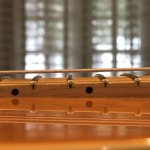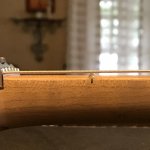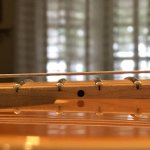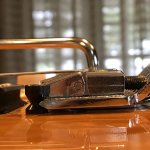Hey Guys I have a 2001 Axis that I want to introduce back into my players pool and I noticed the action is higher then I think it should be. It is fine for the first several frets but gets worse as you travel down the fretboard. I researched some of the threads on this Forum and the FAQ's on the Ernie Ball Website. I also spoke with the tech at Ernie Ball Joel great guy and he sent me 2 shims a pink and yellow. I had my guitar tech install the yellow shim and Im posting the results. Was looking for some suggestion still seems like there is a way to go in reagrds to lowering the action. Appreciate any advice and thanks in advance. Let me know if you want to see additonal pictures
Regards Kenny
Regards Kenny







